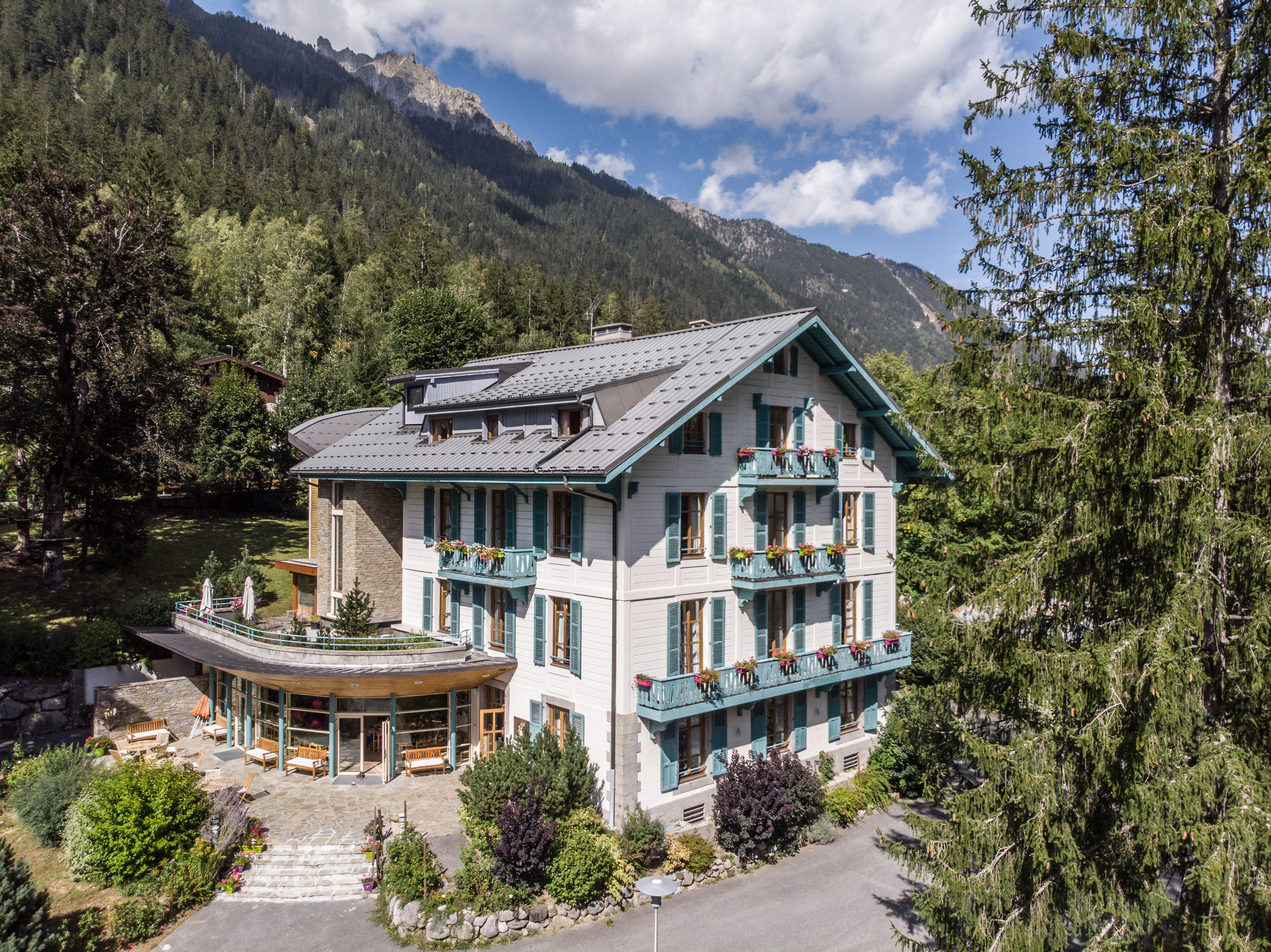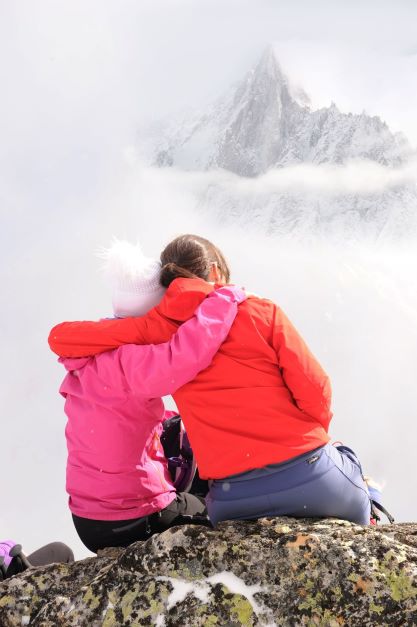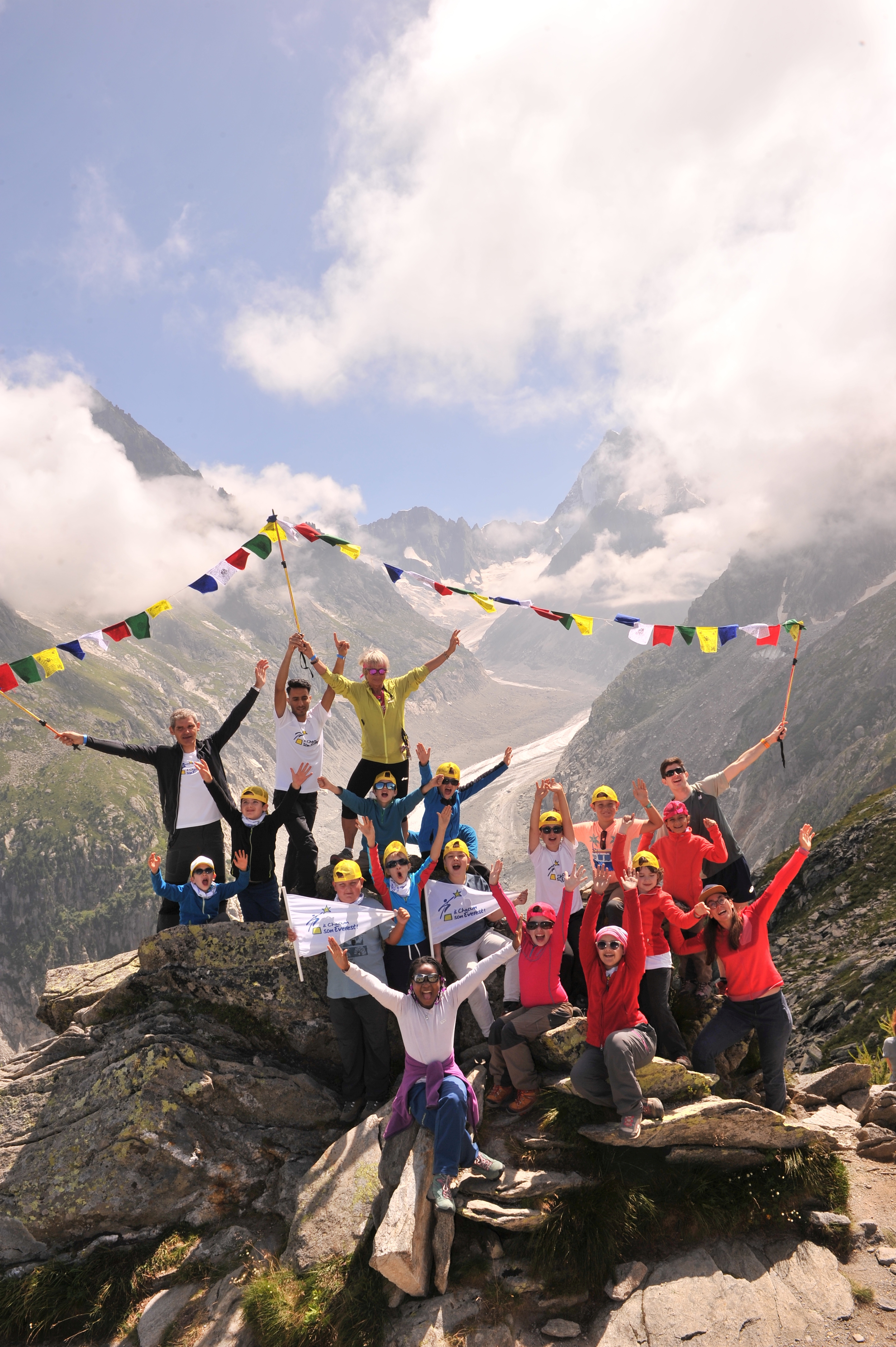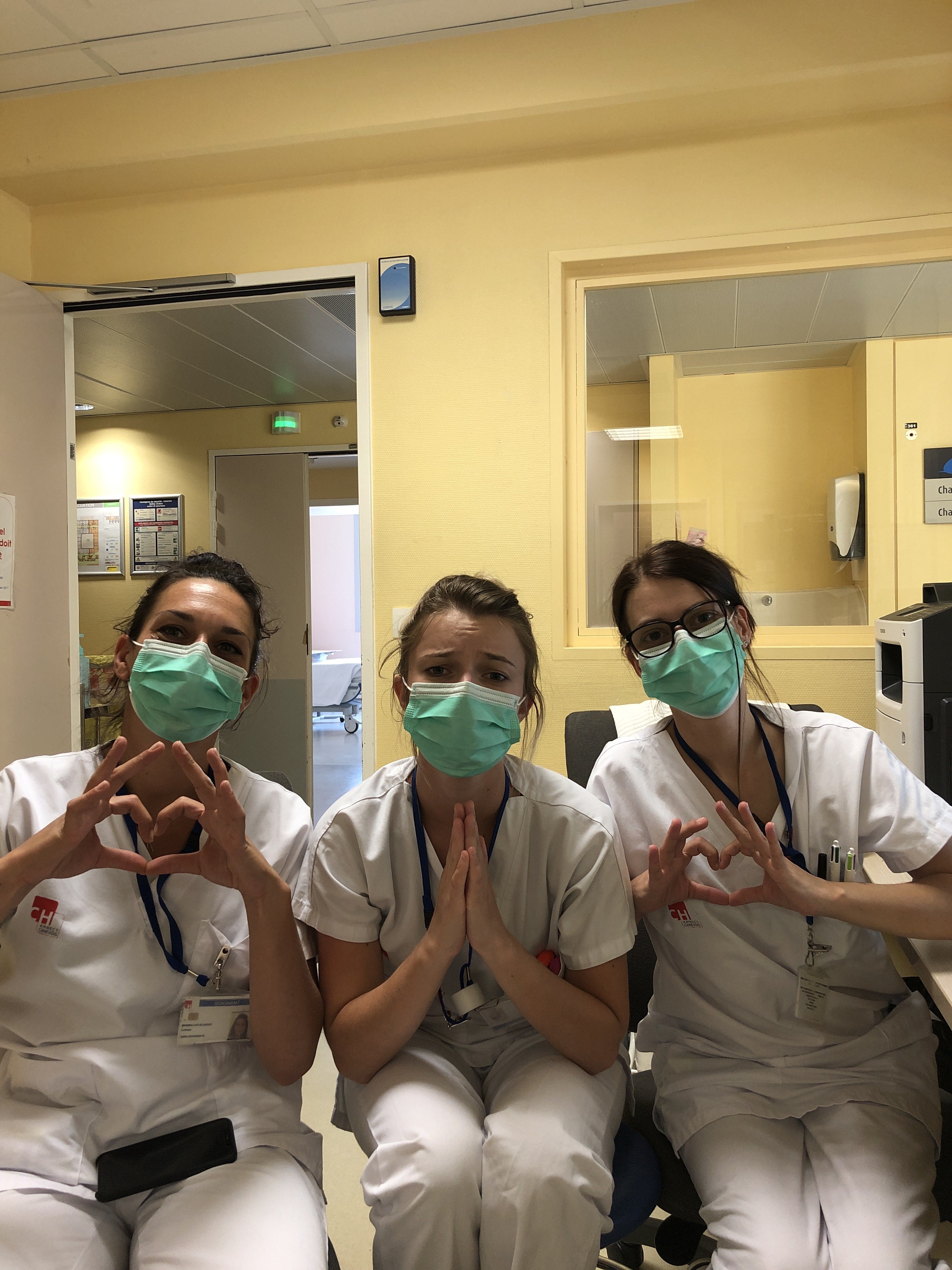- After crossing Tibet on a mountain bike and then Baffin Island in a sea kayak, Christine Janin became the first French woman to climb Everest in 1990. Two years later, she became the first European to successfully complete the "Seven Summits" challenge after reaching the highest peak on each continent: Everest (Asia), Mount Vinson (Antarctica), Aconcagua (South America), McKinley or Denali (North America), Elbrus (Europe), Kilimanjaro (Africa), Puncak Jaya or Carstensz pyramid (Oceania). In 1997, after 62 days on skis, Christine Janin became the first woman in the world to reach the North Pole without mechanical means or sled dogs.
France: Junior mountaineers seek physicians
“À Chacun Son Everest!” organises trips that are of great inspiration for the children and women in remission joining; and for the physicians travelling with them.
À Chacun son Everest !, changing lives with each adventure
Article translated from the original French version
Following her ascent of Mount Everest in 1990 as the first French woman to reach the roof of the world, Christine Janin1 was invited to tell the story of her adventure to children undergoing cancer treatment at the Trousseau Hospital. A physician by training, she quickly drew parallels between the difficulties encountered in conquering a summit and those experienced in overcoming the disease: The diagnosis that overwhelms like an avalanche, the discouragement that lurks along the route leading to the summit or to recovery, the sterile room that protects like a bivouac tent.
With the help of Professor André Baruchel, Head of the Paediatric Haematology Department at the Hôpital Saint-Louis, Christine Janin set up mountain trips for children with cancer and leukaemia. À Chacun Son Everest! (In English: To Each Their Own Everest!), an association created in 1994, also welcomes women in remission from breast cancer.
Trips for children and women
This year there are 30 trips planned, 6 for children and 24 for women. The programme includes hiking and climbing, yoga, meditation and time to talk. All these activities are supervised by professionals. As for the carers, Christine Janin looks for a pair to share the life of the group for six days.
“For children, this duo is ideally a combination of a nurse and a physician or resident with a background in paediatrics, oncology or haematology. But this is not necessarily a prerequisite, several general practitioners have already participated. If necessary, the referring oncologists from the 25 centres that send us young people are always on hand to help.”
In fact, the caregivers are primarily concerned with looking after the young people who are weakened by the disease. Having a medical team around also reassures the parents. Working in pairs allows us to have a sharper eye. It also gives more flexibility: If one child is not feeling well, he or she stays at the Chalet with one caregiver while the other goes to the mountains with the group.
"These trips are indescribable. You have to experience them!"
Laura Blanchon is a paediatric intern at the Orléans Regional Hospital. This summer, she will join the charity for the fourth time. It all started in 2019, when the head of the paediatric oncology department she was training in passed on to her a message from Christine Janin who was looking for a physician. The experience, which was very intense from a human point of view, also proved to be a formative one.
“These children are emotionally fragile. We offer them support and reassurance. And they need to feel cared for. But above all I have to speak about what they have given me. As a hospital doctor, I only see the children in this context. Up there, I learned a lot about their feelings during hospitalisation, their fears but also their joys. Now I understand some of the way people behave in hospitals. I also realised that even the smallest children absorb much more than I had imagined. Today I explain the stages of the illness differently, I adapt better to the age of the child.”
One of Laura Blanchon's memories perfectly sums up the spirit of the association: to put smiles back on children's faces and fill them with pride again. “I simply put some “magic” lotion on a kid who was struggling to reach the top. Up there, he thanked me, saying that the magic lotion had helped him to excel. These trips are indescribable. You have to experience them!”

Surrounded by a vast park, the 1,200 m2 chalet faces Mont Blanc. It includes a climbing room and a spa area.
(Copyright: Gaetan Haugeard / À chacun son Everest)
Native of Chamonix, Jeanne Cardis saw the association's announcement on Facebook. As a general practitioner in Lyon, she did not hesitate to close her doctor's office for a week last summer to come and supervise a group of teenagers. “I was a bit apprehensive about taking care of sick children, as this is not my specialty. But in the end, I had very little care work to do.”
The trip proved to be very rewarding, as much through the community life with these particularly mature young people as through the dialogue with all the supervisors. “We are many adults, with very varied backgrounds, from the Chalet staff to the mountaineers. Among all of us, we share a common and very palpable value, which is benevolence.” Dr. Cardis does not yet know if she will find a replacement for her office this summer. But one thing she knows for sure: in August, she will be back up in the mountains.
A new lease on life after breast cancer
Since 2011, dedicated trips have been available for women who have recently been treated for breast cancer. The only condition is that the radiotherapy must have been completed at least four months ago.
Christine Janin tries to gather seasoned caregivers around these women; the questions the women ask are specific, the problems complex, their stories painful. "We are looking for oncologists and even senologists. Psychologists trained in sexology or marital therapy are also very valuable."
Damien Tomasso has supervised two of these trips, always in combination with a psychologist. He works in a support and palliative care department (Groupe hospitalier Diaconesses Croix Saint-Simon) and provides post-cancer consultations. For him too, the stays in Chamonix have changed his work ethic. “I became aware of the extent of their guilt. These women ask themselves what they did to become ill. Obviously, this guilt is not sufficiently addressed during the treatment process.”
Casual conversations during a walk, in small groups or in pairs, turn out to be a time for healing. Words flow freely as we walk, but they also do in dedicated meetings. “These are emotionally powerful moments of letting go between people who understand and learn from each other,” explains the physician. One evening is always devoted to questions related to sexuality after surviving cancer. “It is not unusual for old traumas to resurface.”
Dr. Tomasso already knows that he will go to the mountains again with “À chacun son Everest”. “Because the experience is so powerful, and because Christine knows how to get people excited. The three colleagues in my department who have also been on one of these trips have all returned as a changed person.”
Healing the caregivers too
After the first wave of Covid-19, the organisation reached out to healthcare staff. 300 hospital workers, including doctors, nurses, managers and service and support staff, met in Chamonix to shake off their tears and replenish their strength.
“In the spring of 2020, I thought about how to help out my colleagues. Should I join a ward as a back-up? Because of my age, I felt I had a more suitable job to do. I talked about it one evening with a physician friend and within twenty minutes the decision had been taken.” Christine Janin immediately asked the region's health authority and the district council of Haute-Savoie for support so that the overworked caregivers would be able to go on such trips. While the association provides accommodation and transport, its funds are earmarked by statute for stays by children and women.
During the summer of 2020, the nurses – most of them women – found some respite in Chamonix. For two or three days, through hiking, climbing, meditation or yoga sessions, they were finally able to re-focus on themselves. “But it was during the time spent talking that the extent of their pain became clear. I saw healthcare managers weeping, anaesthetists collapsing, nurses from retirement homes devastated. They had all put so much effort into fighting the pandemic.”
Again, these people had to be among themselves to dare to express their anger and fear. Christine Janin remembers the nurse who spent two months living in a hotel, terrified of transmitting the disease to her family. Or the anaesthetist whose words sum up these journeys so well: “Here, we have the right to cry, to show our weaknesses”.


